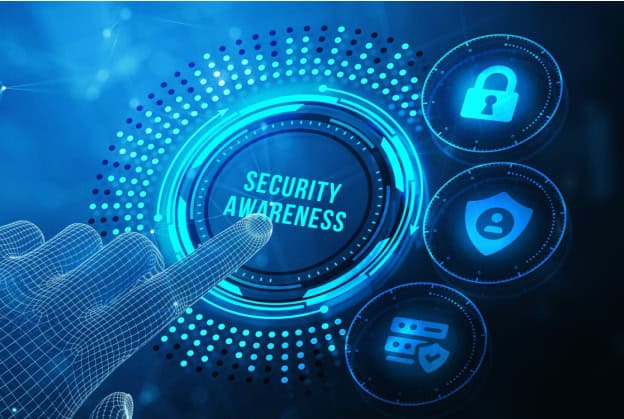Blockchain technology has emerged as one of the most revolutionary innovations of the modern age, capturing the imagination of industries and governments worldwide. From its roots in cryptocurrencies like Bitcoin to its applications in supply chains, healthcare, finance, and even voting systems, blockchain holds the potential to redefine the way we interact with data, conduct business, and ensure security. But despite its widespread usage and coverage, the question remains: what is blockchain, and why is it so significant?
At its core, blockchain is a decentralized, distributed ledger technology that provides a transparent, immutable, and secure method of recording transactions and managing data. But the intricacies of blockchain go far beyond its association with Bitcoin and digital currencies. This article will explore the concept of blockchain, its mechanisms, how it works, and its far-reaching implications for various industries.
The Genesis of Blockchain
The first significant use of blockchain technology appeared in 2008 when an anonymous individual or group of individuals under the pseudonym “Satoshi Nakamoto” introduced Bitcoin. Bitcoin, a decentralized digital currency, was designed to eliminate the need for centralized financial institutions by allowing peer-to-peer transactions over a secure, transparent ledger system. This ledger was based on a technology called blockchain.
Blockchain’s initial purpose was to enable secure, transparent, and decentralized financial transactions without intermediaries like banks. However, as the technology matured, its applications began to expand beyond cryptocurrency. Today, blockchain is being recognized as a breakthrough in how data can be securely and transparently recorded, transferred, and accessed across various industries.
The Foundation: What Makes Blockchain Different?
To understand the significance of blockchain, it’s essential to recognize how it differs from traditional systems of data management. In centralized systems, data is stored on a central server or database, controlled by a single authority—be it a corporation, government agency, or financial institution. The centralization of control over data introduces several vulnerabilities, such as the risk of hacking, data manipulation, and lack of transparency.
In contrast, blockchain is inherently decentralized. Instead of relying on a central server or database, blockchain operates across a distributed network of computers, often referred to as “nodes.” These nodes work together to verify and record transactions on the blockchain. Each node holds a copy of the entire blockchain, ensuring that no single party has control over the data. This decentralized nature makes blockchain more resilient to attacks and data manipulation, as there is no central point of failure.
The transparency of blockchain also sets it apart from traditional systems. Every transaction recorded on the blockchain is visible to all participants in the network, creating a level of accountability that is hard to achieve in centralized systems. Once a transaction is recorded on the blockchain, it becomes immutable, meaning that it cannot be altered or deleted. This ensures the integrity of the data and provides a permanent record of all transactions, which is particularly valuable in industries where transparency, auditability, and accountability are crucial.
How Blockchain Works: The Role of Blocks and Cryptography
Blockchain’s inner workings are grounded in cryptographic principles that ensure the security and immutability of the data recorded on the network. The core components of blockchain are “blocks,” “chains,” and “hashing.”
Blocks and Transactions
Each “block” in a blockchain is a container for a group of transactions. A block typically contains information such as a list of transactions, a timestamp, a unique identifier called a “hash,” and the hash of the previous block in the chain. This linking of blocks through hashes creates the chain in “blockchain.”
Each transaction within a block is a record of a transfer of value, whether it’s cryptocurrency, data, or any other asset. When a transaction is initiated, it is broadcast to the network for validation. Once validated by the network participants, the transaction is grouped into a block.
Hashes and Security
A hash is a cryptographic function that takes an input (data) and produces a fixed-length string of characters, which serves as a unique identifier for the data. Each block in the blockchain contains a hash of the previous block, forming a chain of blocks that are cryptographically linked. This ensures that once a block is added to the blockchain, it cannot be altered without changing every subsequent block. The process of creating a hash is computationally intensive, which adds an extra layer of security.
The integrity of the blockchain is maintained through the cryptographic process of “proof of work” (PoW) or other consensus mechanisms like “proof of stake” (PoS). These mechanisms are designed to make it difficult for any single party to alter the blockchain, as doing so would require immense computational power.
Decentralization and Consensus Mechanisms
In traditional centralized systems, a central authority is responsible for validating and recording transactions. In contrast, blockchain uses a decentralized consensus model to ensure that all participants agree on the state of the blockchain. This is achieved through consensus mechanisms like proof of work, proof of stake, or more advanced protocols like Byzantine Fault Tolerance.
Proof of work, used by Bitcoin and many other cryptocurrencies, requires network participants (miners) to solve complex mathematical problems in order to add a new block to the blockchain. This process requires a significant amount of computational power, making it costly and time-consuming to alter the blockchain. Proof of stake, on the other hand, is an alternative consensus mechanism where validators are chosen based on the number of cryptocurrency tokens they hold and are willing to “stake” as collateral.
By requiring consensus from multiple participants in the network, blockchain ensures that no single party can unilaterally manipulate the data or control the ledger. This decentralization fosters trust among participants, as they can rely on the blockchain to accurately reflect the state of the system.
The Benefits of Blockchain: Security, Transparency, and Immutability
Blockchain offers several advantages over traditional systems of data management. Some of the most notable benefits include:
Security
Blockchain’s use of cryptography and consensus mechanisms makes it incredibly secure. The decentralized nature of blockchain ensures that there is no single point of failure, reducing the risk of hacks, fraud, or data breaches. The immutability of the blockchain further enhances security, as once a transaction is recorded, it cannot be altered or deleted.
Transparency
Every transaction on the blockchain is visible to all participants in the network. This transparency fosters trust, as participants can independently verify the authenticity of transactions. This level of transparency is particularly valuable in industries like finance, supply chain management, and healthcare, where visibility into processes and transactions is crucial for ensuring compliance and accountability.
Immutability
Once a transaction is recorded on the blockchain, it becomes a permanent part of the ledger. This immutability ensures that data cannot be tampered with or erased, providing an auditable and verifiable record of all transactions. This feature is especially useful in industries where maintaining a permanent, tamper-proof record is essential, such as legal contracts, land ownership records, and medical histories.
Cost Reduction
Blockchain has the potential to reduce costs by eliminating intermediaries. In traditional systems, intermediaries like banks, payment processors, and notaries play a central role in facilitating transactions. These intermediaries often charge fees and introduce delays into the process. With blockchain, peer-to-peer transactions can occur directly between participants, reducing the need for intermediaries and lowering transaction costs.
Speed and Efficiency
Blockchain can speed up transactions by eliminating the need for intermediaries and reducing the time required for verification and processing. For example, traditional cross-border payments can take several days to process due to the involvement of multiple banks and intermediaries. With blockchain, these transactions can be completed in a matter of minutes, improving efficiency and reducing processing times.
Blockchain Applications Across Industries
Blockchain’s versatility has led to its adoption across various sectors. While its most famous use case remains in cryptocurrency, blockchain’s potential extends far beyond digital currencies. Below are just a few examples of how blockchain is being used in different industries.
Finance and Banking
Blockchain’s most well-known application is in the world of cryptocurrency. Bitcoin, Ethereum, and other cryptocurrencies are built on blockchain technology, enabling decentralized, peer-to-peer transactions without the need for a central authority like a bank. However, blockchain’s impact on the financial sector goes beyond cryptocurrency. Many financial institutions are exploring how blockchain can streamline processes, reduce fraud, and improve transparency in banking and payments.
Blockchain can enable faster, cheaper, and more secure cross-border payments. Traditional international money transfers are often slow and expensive due to the involvement of multiple banks and intermediaries. With blockchain, transactions can occur directly between parties, reducing fees and processing times.
Supply Chain Management
One of the most promising applications of blockchain is in supply chain management. Blockchain can provide end-to-end visibility into the supply chain, allowing businesses and consumers to track the provenance of goods and verify the authenticity of products. For example, blockchain can be used to trace the journey of a product from its origin to the store shelf, ensuring that it is ethically sourced, free of fraud, and compliant with regulatory standards.
By providing a transparent and immutable record of transactions, blockchain can help reduce fraud, improve efficiency, and ensure the integrity of products. It can also help businesses monitor inventory levels in real-time, improving supply chain operations and reducing waste.
Healthcare
Blockchain has the potential to revolutionize healthcare by providing a secure, interoperable platform for storing and sharing medical data. Patients’ health records could be stored on a blockchain, allowing them to share their medical history with doctors, hospitals, and pharmacies securely and efficiently. Blockchain’s transparency and immutability would ensure that medical data is accurate and tamper-proof.
Moreover, blockchain could be used to track the supply chain of pharmaceuticals, ensuring that drugs are genuine and not counterfeit. This could help combat the growing problem of counterfeit medications, which pose a significant risk to public health.
Voting and Governance
Blockchain could also play a pivotal role in transforming the way we conduct elections and governance. By providing a secure, transparent, and tamper-proof voting system, blockchain could help increase voter participation and reduce the risk of election fraud. Blockchain could ensure that votes are accurately recorded and counted, and that the election results are transparent and verifiable.
In addition to voting, blockchain could be used in other areas of governance, such as the management of public records, land ownership, and government contracts. By providing a decentralized and immutable record, blockchain could reduce corruption and ensure greater accountability in government operations.
Legal Industry
The legal industry is another area where blockchain can have a significant impact. Smart contracts, which are self-executing contracts with the terms of the agreement directly written into code, are one of the most exciting applications of blockchain in law. Smart contracts can automate the execution of agreements, reducing the need for intermediaries and legal paperwork.
Blockchain can also be used to maintain secure, transparent records of legal documents, such as deeds, patents, and wills. By using blockchain to record these documents, individuals and organizations can ensure that they are tamper-proof and easily accessible.
The Challenges of Blockchain Adoption
Despite its immense potential, blockchain faces several challenges that must be addressed before it can reach widespread adoption. These challenges include:
Scalability
Blockchain networks, particularly those that rely on proof of work (like Bitcoin), can struggle with scalability. The process of validating transactions and adding new blocks to the blockchain requires significant computational power, which can lead to slower transaction speeds and higher costs as the network grows. Solutions like sharding, layer-2 protocols, and alternative consensus mechanisms like proof of stake are being explored to address these scalability issues.
Regulation
The decentralized and anonymous nature of blockchain has raised concerns among regulators and governments. While blockchain offers transparency and security, it also enables individuals to conduct transactions without the oversight of regulatory authorities. This has led to concerns about money laundering, fraud, and the potential use of blockchain for illegal activities.
Governments and regulatory bodies are working to develop frameworks that can balance the benefits of blockchain with the need for oversight and compliance. However, the regulatory landscape for blockchain remains uncertain in many parts of the world, which could hinder its adoption.
Energy Consumption
Blockchain networks that use proof of work, like Bitcoin, are known for their high energy consumption. Mining operations, which validate transactions and secure the network, require substantial computational power and electricity. This has raised concerns about the environmental impact of blockchain, particularly as the number of transactions on blockchain networks grows.
Solutions like proof of stake and more energy-efficient consensus mechanisms are being developed to address the environmental impact of blockchain. However, energy consumption remains a challenge for the widespread adoption of blockchain technology.
The Future of Blockchain
Blockchain is still in its early stages, but its potential is undeniable. As more industries explore its applications and as technology continues to evolve, blockchain has the potential to revolutionize how we store, share, and secure data. From finance to healthcare, supply chains to voting systems, blockchain is poised to transform the way we live and do business.
As challenges such as scalability, regulation, and energy consumption are addressed, blockchain technology will likely become more accessible and widely adopted. Whether it’s in the form of cryptocurrencies, smart contracts, decentralized applications (dApps), or secure data storage systems, blockchain will continue to play an increasingly important role in shaping the future.
In conclusion, blockchain is not just a trend or a buzzword—it’s a transformative technology with the power to change the world. Understanding its core principles, applications, and potential will be essential for anyone looking to navigate the rapidly evolving landscape of digital technology. Whether you’re a business leader, a technologist, or just a curious individual, staying informed about blockchain will be key to understanding the future of the digital world.






